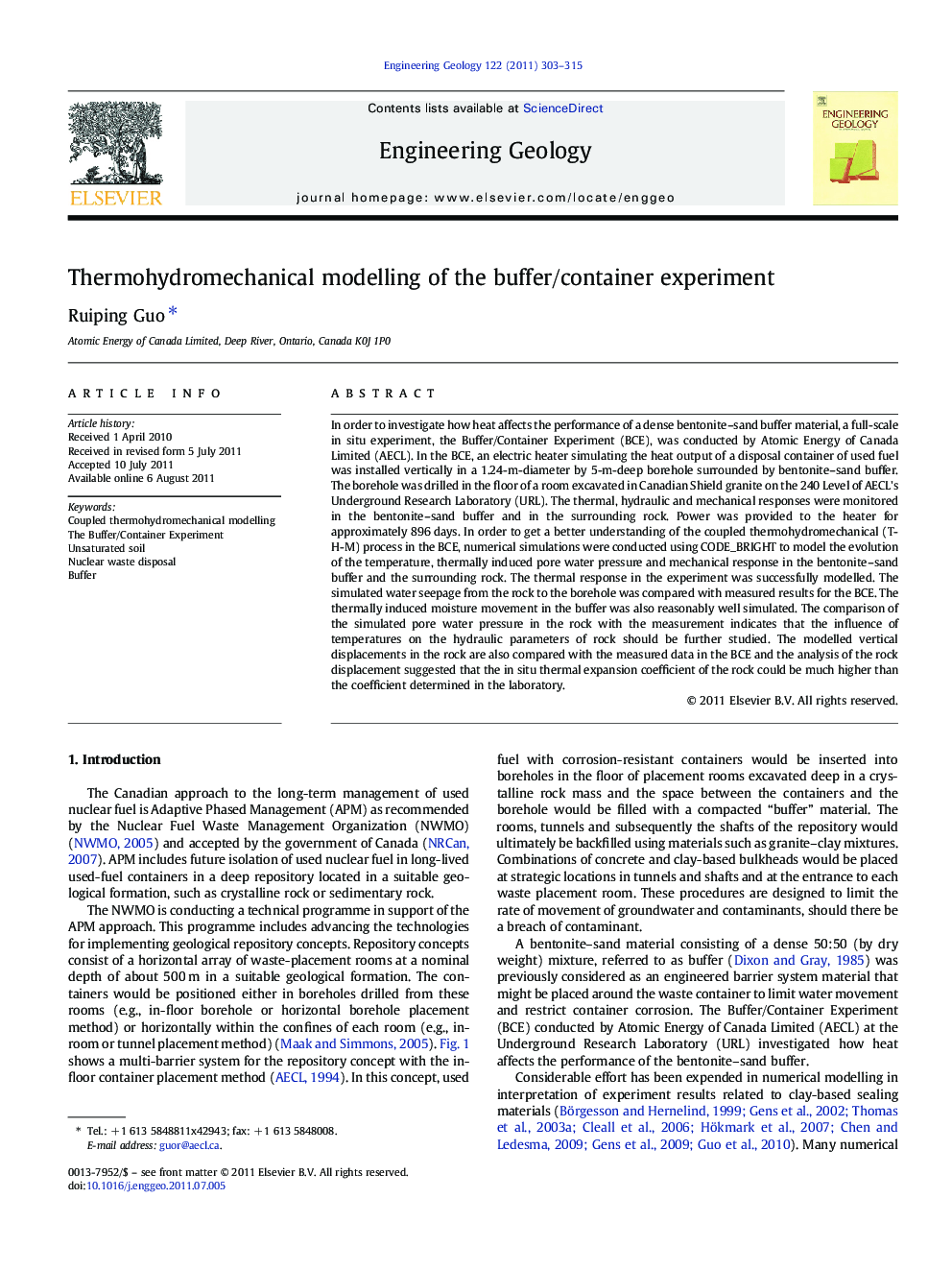| کد مقاله | کد نشریه | سال انتشار | مقاله انگلیسی | نسخه تمام متن |
|---|---|---|---|---|
| 4744259 | 1641850 | 2011 | 13 صفحه PDF | دانلود رایگان |

In order to investigate how heat affects the performance of a dense bentonite–sand buffer material, a full-scale in situ experiment, the Buffer/Container Experiment (BCE), was conducted by Atomic Energy of Canada Limited (AECL). In the BCE, an electric heater simulating the heat output of a disposal container of used fuel was installed vertically in a 1.24-m-diameter by 5-m-deep borehole surrounded by bentonite–sand buffer. The borehole was drilled in the floor of a room excavated in Canadian Shield granite on the 240 Level of AECL's Underground Research Laboratory (URL). The thermal, hydraulic and mechanical responses were monitored in the bentonite–sand buffer and in the surrounding rock. Power was provided to the heater for approximately 896 days. In order to get a better understanding of the coupled thermohydromechanical (T-H-M) process in the BCE, numerical simulations were conducted using CODE_BRIGHT to model the evolution of the temperature, thermally induced pore water pressure and mechanical response in the bentonite–sand buffer and the surrounding rock. The thermal response in the experiment was successfully modelled. The simulated water seepage from the rock to the borehole was compared with measured results for the BCE. The thermally induced moisture movement in the buffer was also reasonably well simulated. The comparison of the simulated pore water pressure in the rock with the measurement indicates that the influence of temperatures on the hydraulic parameters of rock should be further studied. The modelled vertical displacements in the rock are also compared with the measured data in the BCE and the analysis of the rock displacement suggested that the in situ thermal expansion coefficient of the rock could be much higher than the coefficient determined in the laboratory.
► Temperature field in the buffer material and the surrounding rock during heating.
► The influence of heat on the buffer saturation in a deep geological environment.
► Thermally induced porewater pressure changes in the surrounding rock.
► Thermally induced displacements in the rock and earth pressure changes in the buffer.
► Developing a good understanding of the processes operating in the BCE.
Journal: Engineering Geology - Volume 122, Issues 3–4, 10 October 2011, Pages 303–315